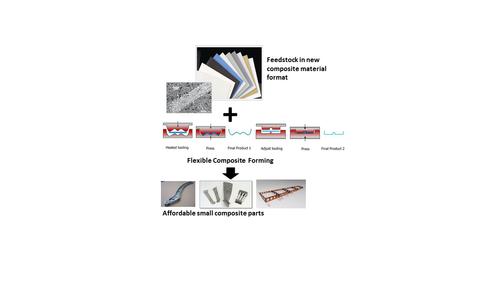December 3, 2015

Three materials classes dominate the discussion of aerospace and military designs: carbon fiber-reinforced plastics, ceramic matrix composites, and new metal alloys. Although these materials have helped aerospace engineers solve design problems for decades, as new goals are set and requirements change the search is on for higher-performing versions. While materials suppliers are perpetually researching formulations, OEMs, government agencies, and the armed forces are ramping up their R&D games to achieve better materials.
Aluminum alloys account for nearly 50% of the aerospace material market in terms of the volume, but only around 25% in terms of the value, according to a recent report by research firm MarketsandMarkets. Demand for them will remain flat between 2014 and 2019, while demand will increase for composite materials and titanium alloys, spurred by their growing use in next-generation aircraft.
The development of better metals is ongoing. Some new metals technologies have resulted from aerospace OEMs quietly developing their own to ensure that they get exactly what they need. Pratt & Whitney, for example, has developed, applied, and optimized several metals technologies for better fuel burn and component durability, plus reduced weight, for its jet engines. These include hybrid metallic fan blades, powder-metal disks, single-crystal alloys combined with thermal barrier coatings, and titanium-aluminide blades, said Frank Preli, Pratt & Whitney's chief engineer for materials and processes.

The company developed a new blade design and materials processing technologies for a lightweight, low-cost aluminum-lithium fan blade. "As far as we know, our hybrid metallic fan blades are the first application of aluminum-lithium as a fan blade material in a commercial engine," said Preli. "They're being used in our PW1100G-JM Geared Turbofan engine for the Airbus A320neo."
Aluminum alone isn't generally a good choice for commercial engine fan blades, because its impact resistance won't meet requirements. So the blade's front is titanium, which bears the brunt of impacts, while its aluminum body becomes the aerodynamic surface. Compared to other choices, such as all-titanium or all-composite blades, hybrid metal fan blades cost and weigh less. They also perform better aerodynamically for the same-size engine than composite blades.
READ MORE ARTICLES ON AEROSPACE MATERIALS:
Pratt & Whitney pioneered powder-metal engine disks. It makes its own powder metals for the nickel-based super-alloys that are used, as well as runs its own isothermal forging capability, said Preli. "So we control everything from beginning to end because getting it right is so critical," he said. "Powder metals have been used in engines, including commercial ones, for many years, but the latest versions of these alloys give us higher operating temperatures than early versions did." The latest version of the nickel super-alloys is used in the company's latest commercial engine, the PW-1000G Geared Turbofan engine, also known as the PurePower engine.
The company also pioneered single-crystal nickel alloys and advanced thermal barrier coatings, which enable blades to operate at temperatures hundreds of degrees above the base material's melting point. "Single-crystal blades have been around a long time, but our technology is more efficient and lets us put in ultra-fine cooling passages that reduce [energy wasted from] cooling air flow and enable higher operating temperatures," said Preli. "That translates into very high turbine efficiency."
Another blade material, titanium-aluminide alloys, enable higher operating temperatures than traditional titanium alloys and are lighter than the nickel alloys they replace. At operating temperatures they perform normally, but at room temperature they're brittle. "So we not only developed the alloy, but also the design, processing, and handling system to take that into account," said Preli. "We worked with MTU Aero Engines and the University of Leoben to develop a wrought form of these alloys for low-pressure turbine blades." These alloys are being introduced in the PW-1100G-JM Geared Turbofan engine, currently being flight-certified at Airbus.
On the composites front, the US Air Force is funding the development of titanium-replacement materials for engines and aircraft. Researchers from the Air Force Research Laboratory and PROOF Research's Advanced Composites Division are developing and maturing computationally derived materials, including advanced, high-temperature polymer matrix composites (PMCs), along with manufacturing and engineering solutions. These materials are intended as replacements for titanium in the B-2, F-117, and F-22 aircraft; missile structures; and engines for the F135 and F110.
As part of the Air Force's Technology Program for Integrated Computational Methods for Composite Materials, the Air Force Small Business Innovation Research/Small Business Technology Transfer (SBIR/STTR) program is providing an additional $750,000 to PROOF to help transition these technologies. Aside from increased service life and fatigue resistance, high-temperature PMCs offer weight savings of up to 40% over titanium. In addition to the composites, associated tools include a computational process model for the material that's integrated into a commercial, off-the-shelf software package; validation of the process model on complex geometries; and a materials design-allowable database.
About the Author(s)
You May Also Like



